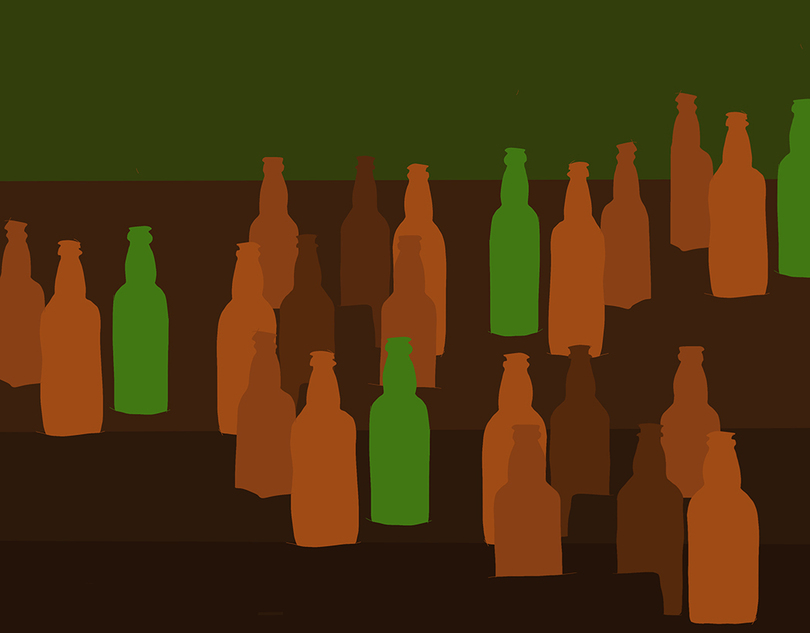CDC study shows 1 in 6 American adults binge drink

Sarah Allam | Head Illustrator
The study found that half of all binge drinks are consumed by people aged 35 or older.
A recent study about binge drinking alcohol has found that one in six adults in the United States binge drink at least once a week, and the practice is more common among young adults.
The study, released by the Centers for Disease Control and Prevention, showed that while binge drinking is more common among adults aged 18 to 34, more than half of all binge drinks are consumed by people aged 35 or older.
Dafna Kanny, senior scientist of the alcohol program for the CDC and lead author on the study, said its findings were surprising. She cited a past study which found middle-aged men made up most of the victims of alcohol poisoning deaths, which involve drinking a large quantity of alcohol.
Kanny said there should be fewer places that sell alcohol around colleges and universities. Establishments that sell alcohol are often concentrated around college campuses, she said.
She also suggested increasing alcohol prices to discourage consumption, like increased cigarette prices have done for lowering the number of smokers.
Subhash Pandey, a professor and the director of the Alcohol Research Center at the University of Illinois of Chicago, said adolescent brains are still developing and alcohol has a profound effect on that development.
“There’s several important regions of the brain still go through maturation process,” he said. “Any kind of insult, and in this case binge drinking or heavy drinking, really disturb the natural process of maturation.”
Excessive drinking as adolescents can lead to high levels of alcohol and drug abuse and mental health issues such as depression and anxiety, Pandey said.
Alcohol can also be one of many environmental factors that changes DNA overtime. Pandey said that change can persist into adulthood and lead to high anxiety and high alcohol consumption.
Kanny said there was no baseline number of binge drinks per person her team looked at for the study. While the study found that binge drinkers in the United States, on average, had 470 drinks annually, she said that number can vary per person.
Brian Quigley, senior research scientist at the University at Buffalo, said social and biological factors can affect how many drinks binge drinkers have on average, and if they become addicted or not.
Quigley said if there’s a history of alcohol abuse in a person’s family, they’re more likely to have a reaction to alcohol.
“You really kind of have to look at the individual, where they start and where they’re going,” he said. “If you’re looking at the social situation of college, it pushes a large group to consume alcohol.”
People can also practice what Quigley calls protective behavioral strategies, such as consuming a non-alcoholic drink with an alcoholic drink, always drinking with one friend who isn’t drinking and drinking with food.
“All of these things can help slow down alcohol you consume and make you less likely to get into trouble because of your drinking,” he said.




